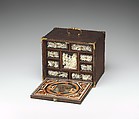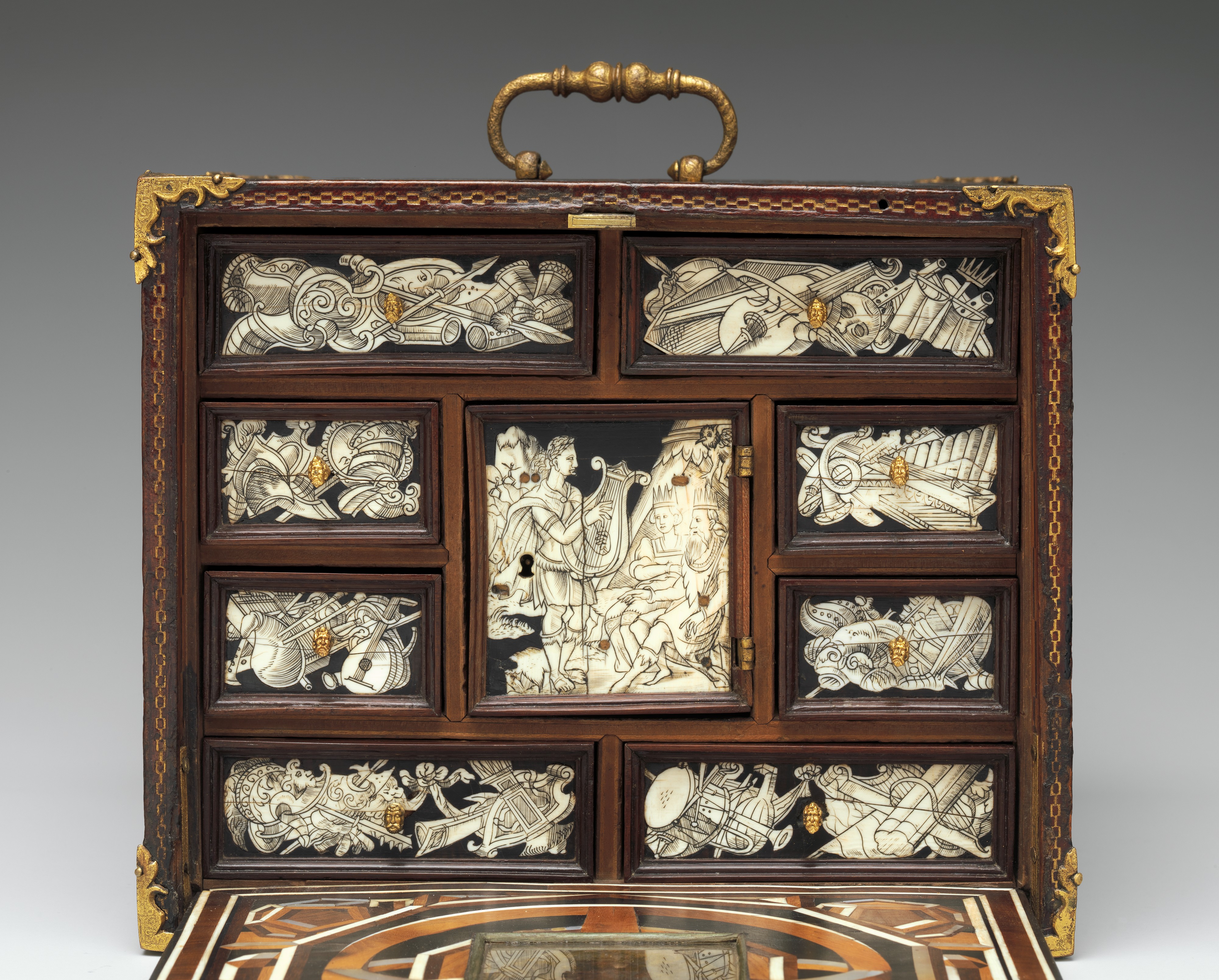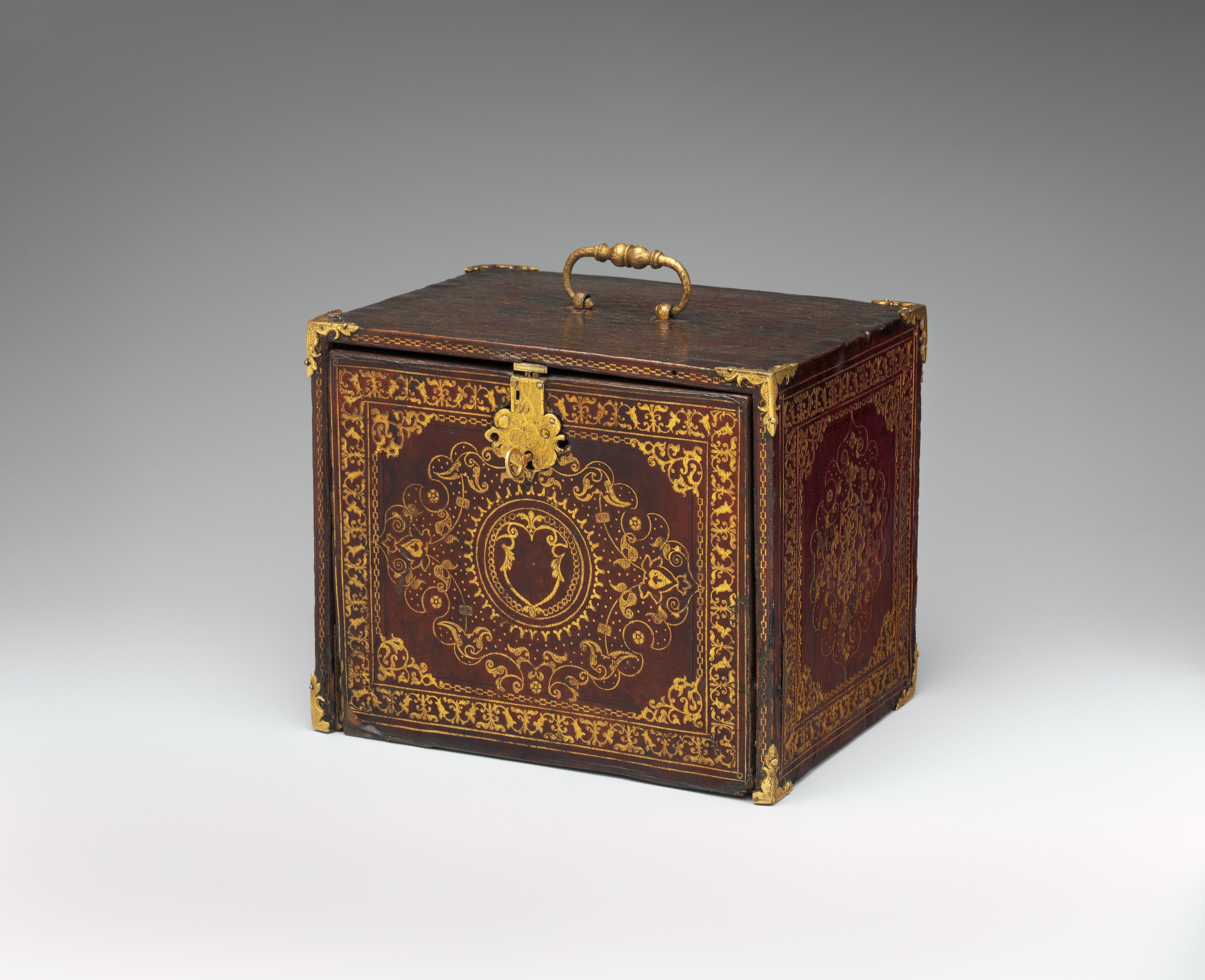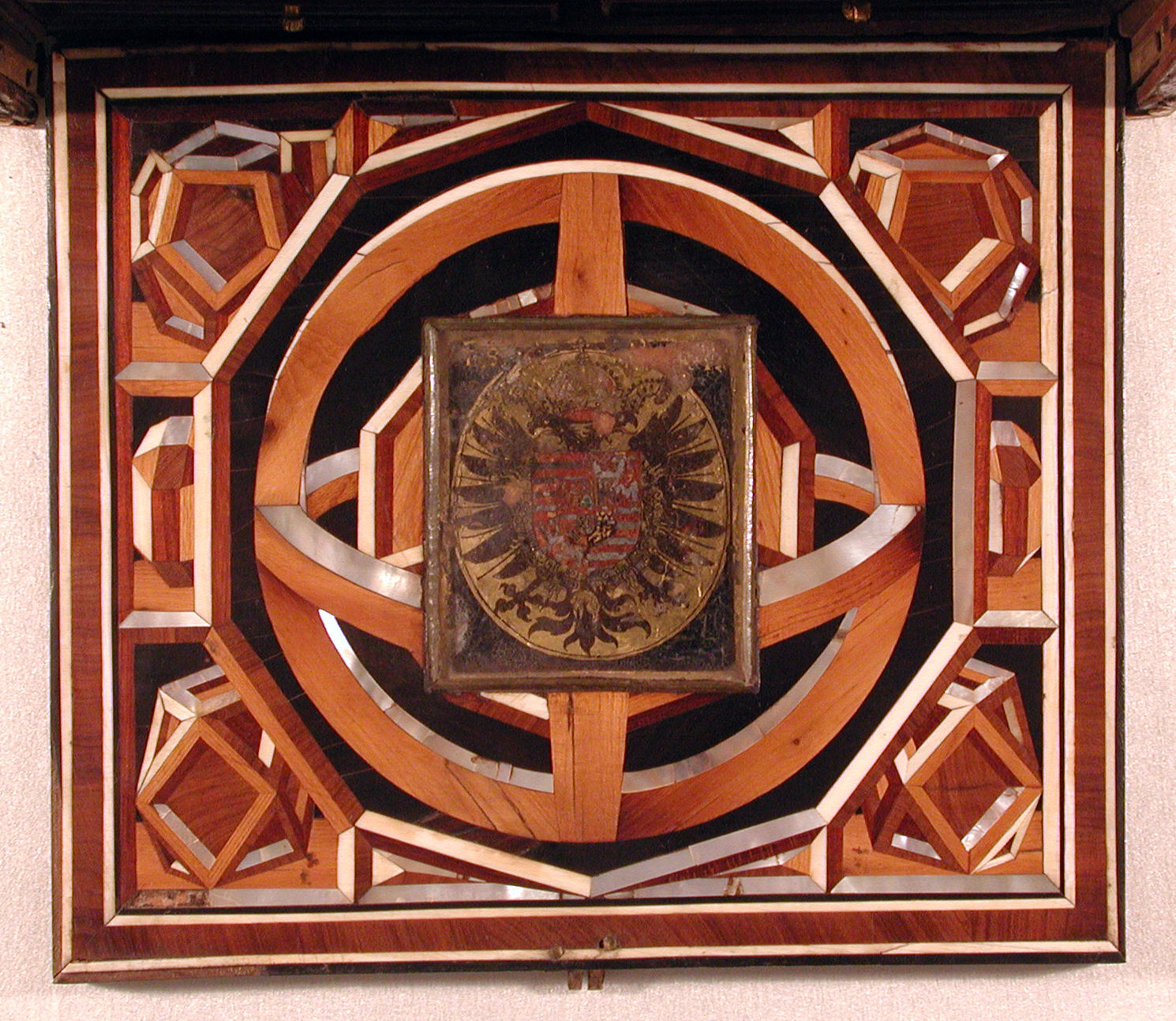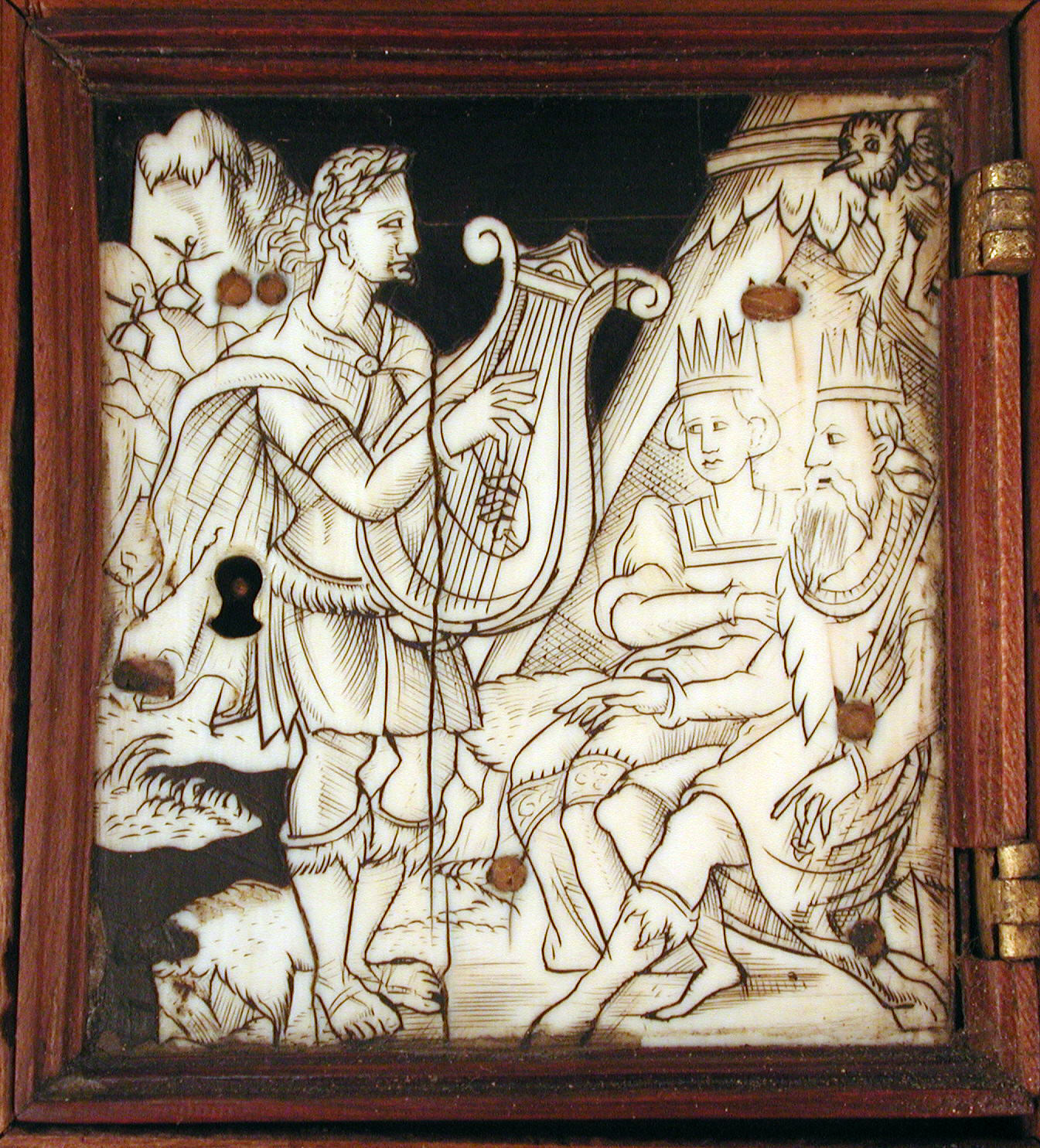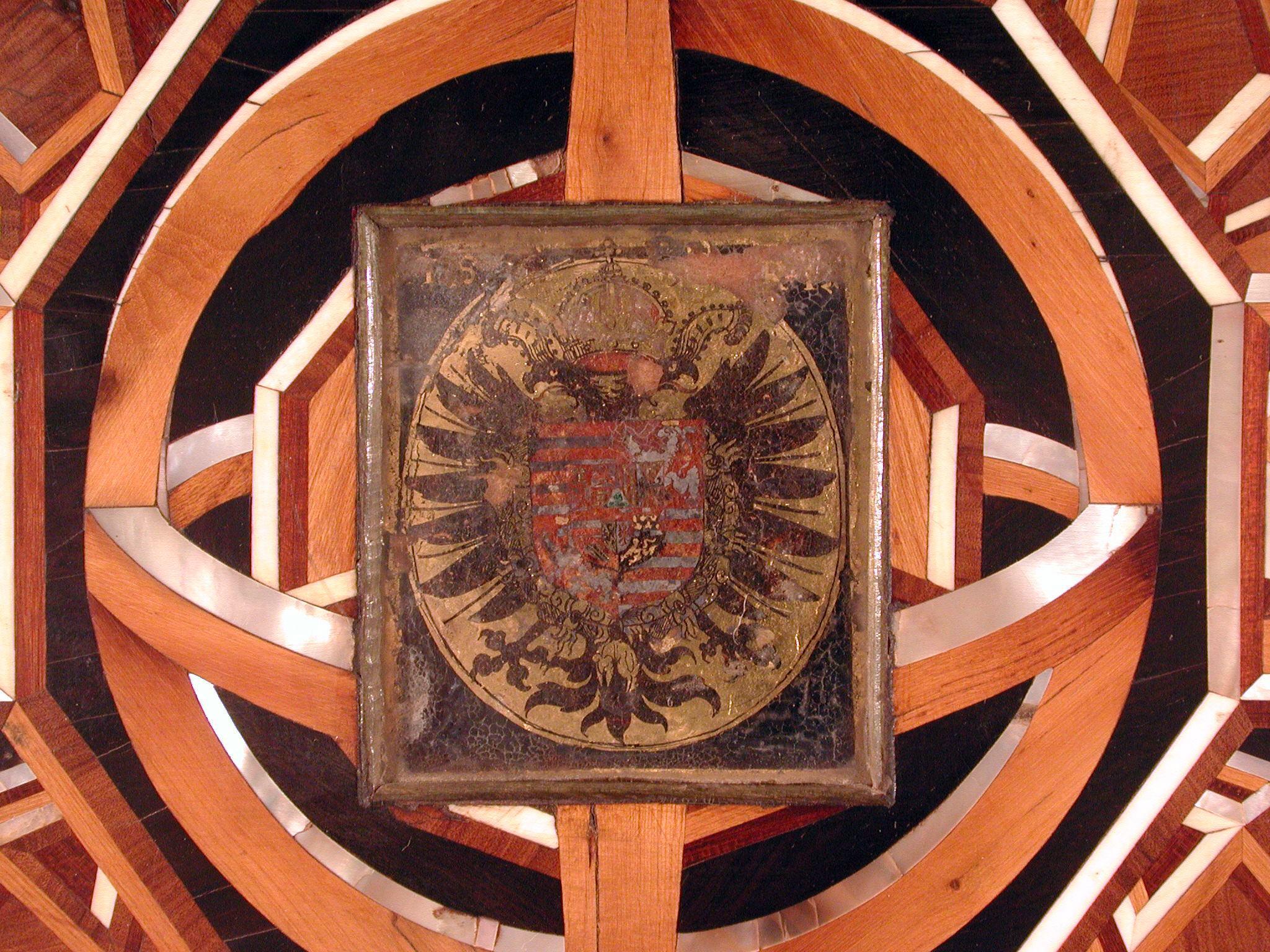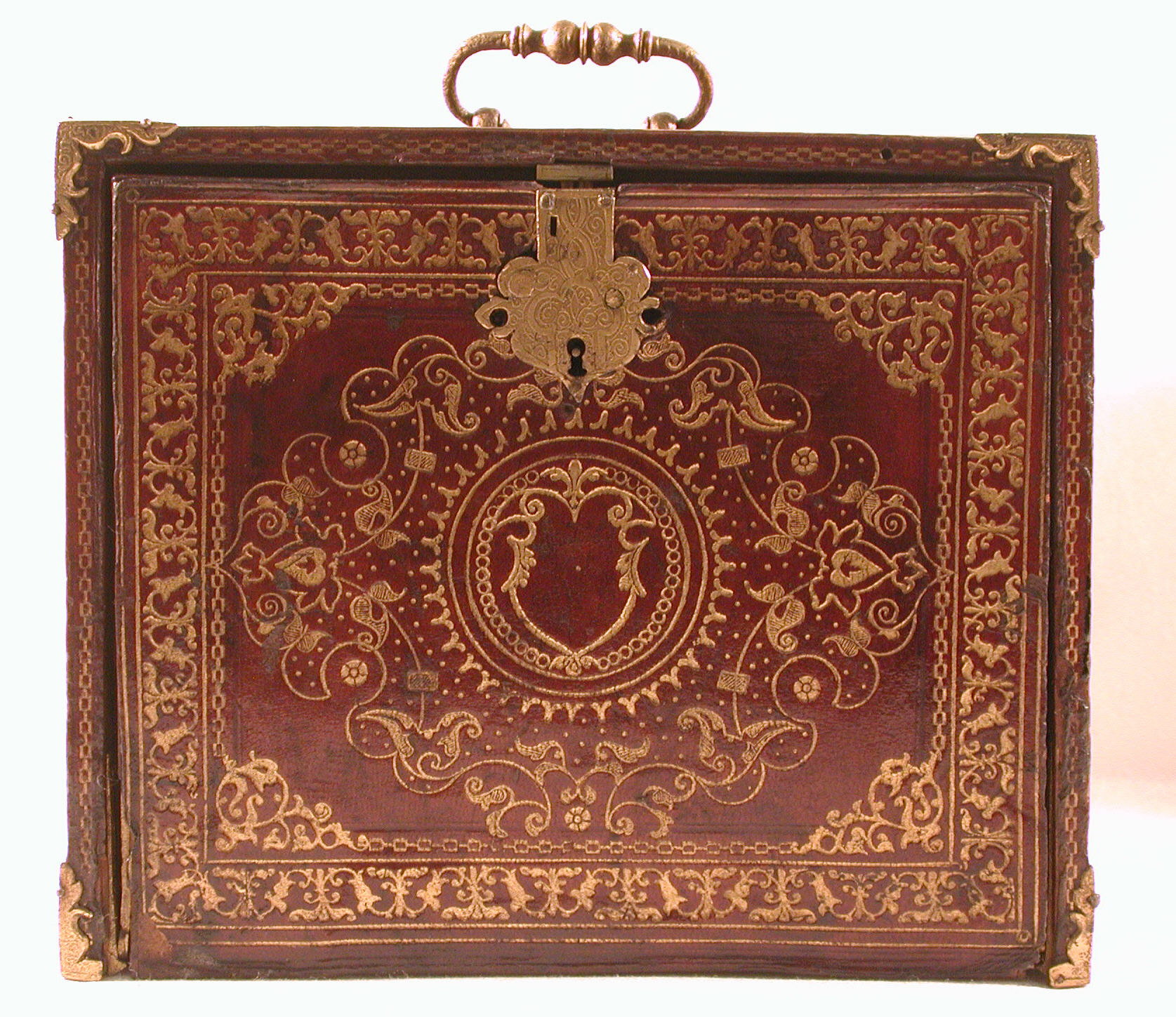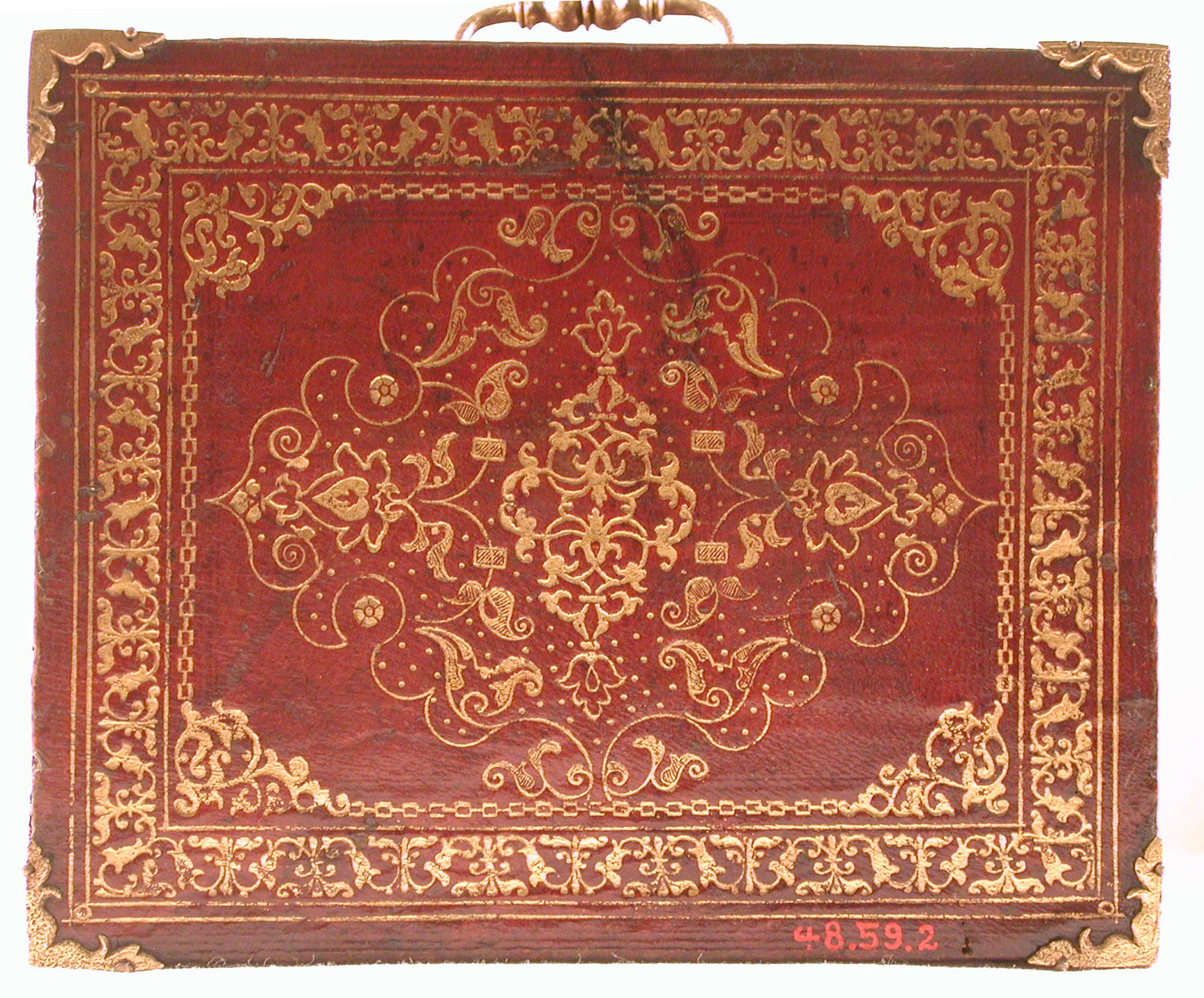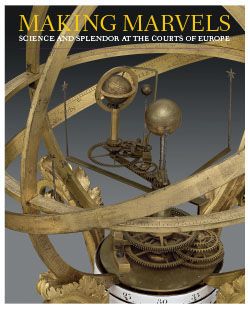Miniature collector's cabinet
Ivory drawer decoration after a composition by Bernard Salomon French
Tailored to the taste of the European courts, these two small cabinets embody the diversity and complexity of the objects found in sixteenth- and seventeenth-century Kunstkammern. The miniature cabinet (48.59.2), encased in a finely gilded leather, was a gift from the Nuremberg town council to an important visitor, possibly a Habsburg, given the presence of the coat of arms of Albert VII, Archduke of Austria and ruler of the Habsburg Netherlands.[1] Trophies of arms and musical instruments decorate the drawer fronts, while the central door panel is based on a 1559 woodcut by Bernard Salomon.[2] The drop-down lid divulges a marquetry inlay of six skeletal (durchsichtigen) corpora, executed in perspective to resemble late sixteenth-century designs by Wenzel Jamnitzer and Lorenz Stoer.[3] Drawn from a vibrant print culture, decorative objects dis-playing variations on the Platonic solids were exported across the continent, presenting the fruits of artisanal experimentation with geometry to wealthy patrons intent on coveting, and displaying, the new and wondrous.
Nanban lacquer, on the other hand, was a relatively new and no less popular import. Nanban, meaning “southern barbarian,” was used in Japan to designate the objects made for foreign markets, and referred to the southern route used by European trade ships to reach Japan.[4] While the techniques used in its manufacture are Japanese, the portable cabinet with drawers (2015.500.2.29a-k) was made in Japan in the same form as “those from Germany,” such as the miniature cabinet.[5] In addition, the edges of each side feature simple geometric patterns in mother-of-pearl inlay specifically designed to appeal to Western collectors.[6]
Footnotes
(For key to shortened references see bibliography in Koeppe, Making Marvels: Science & Splendor at the Courts of Europe: The Metropolitan Museum of Art, 2019)
1. The coat of arms appears to have been added after the cabinet was completed.
2. Lejeune 2015; Virassamynaïken 2015, p. 331, no. 283.
3. A companion cabinet in a private collection was likely completed at the same workshop and has an intact polyhedron on the drop-down lid; see Spenlé 2018, p. 18, fig. 10.
4. Impey and Jörg 2005, p. 77.
5. Dalgado 1919–21, vol. 1, p. 118, cited by Masako Watanabe in Murase 2003, p. 293.
6. Haino 1991, p. 170. See Riccardi-Cubitt 1992 for more on early modern cabinets.
This image cannot be enlarged, viewed at full screen, or downloaded.
This artwork is meant to be viewed from right to left. Scroll left to view more.
